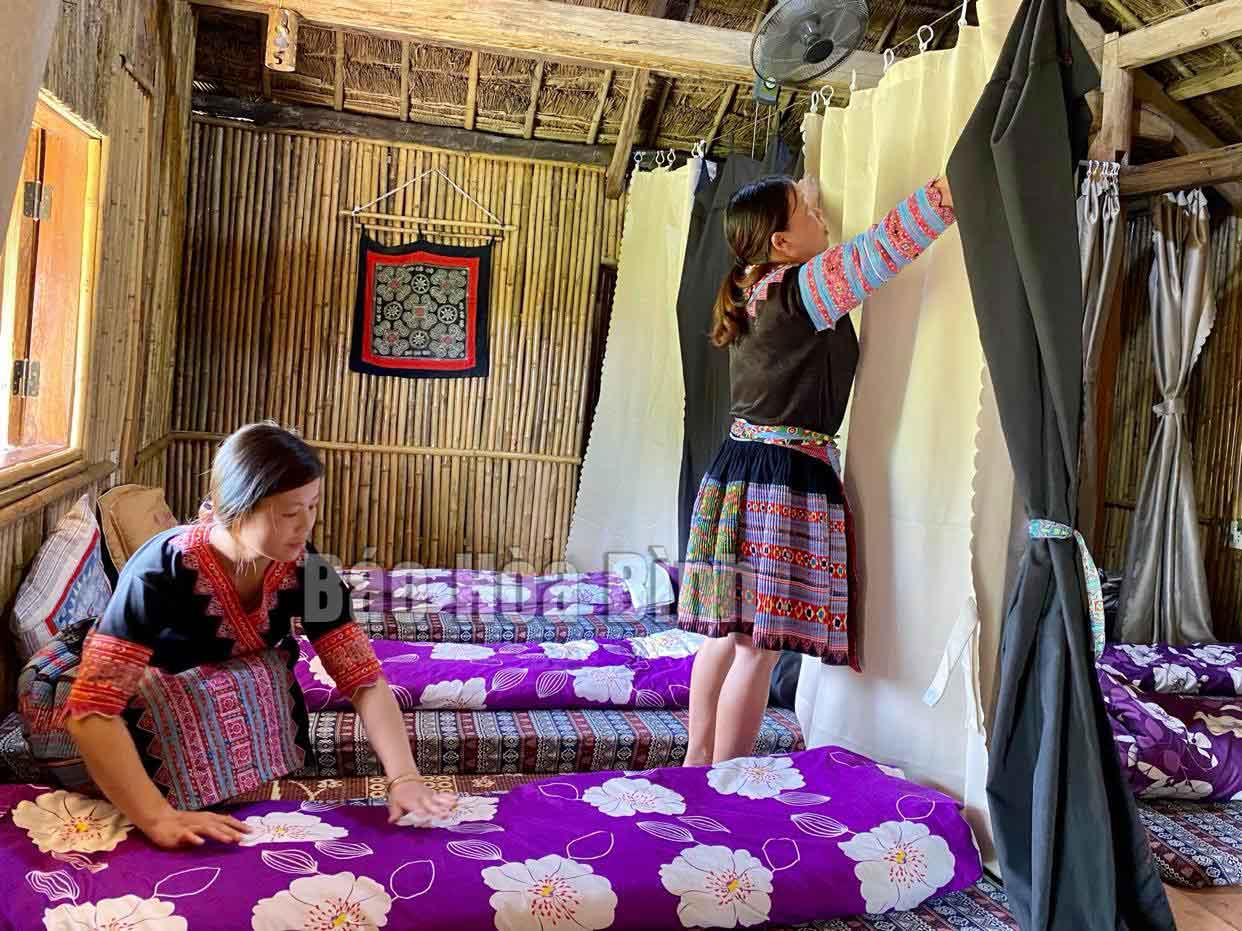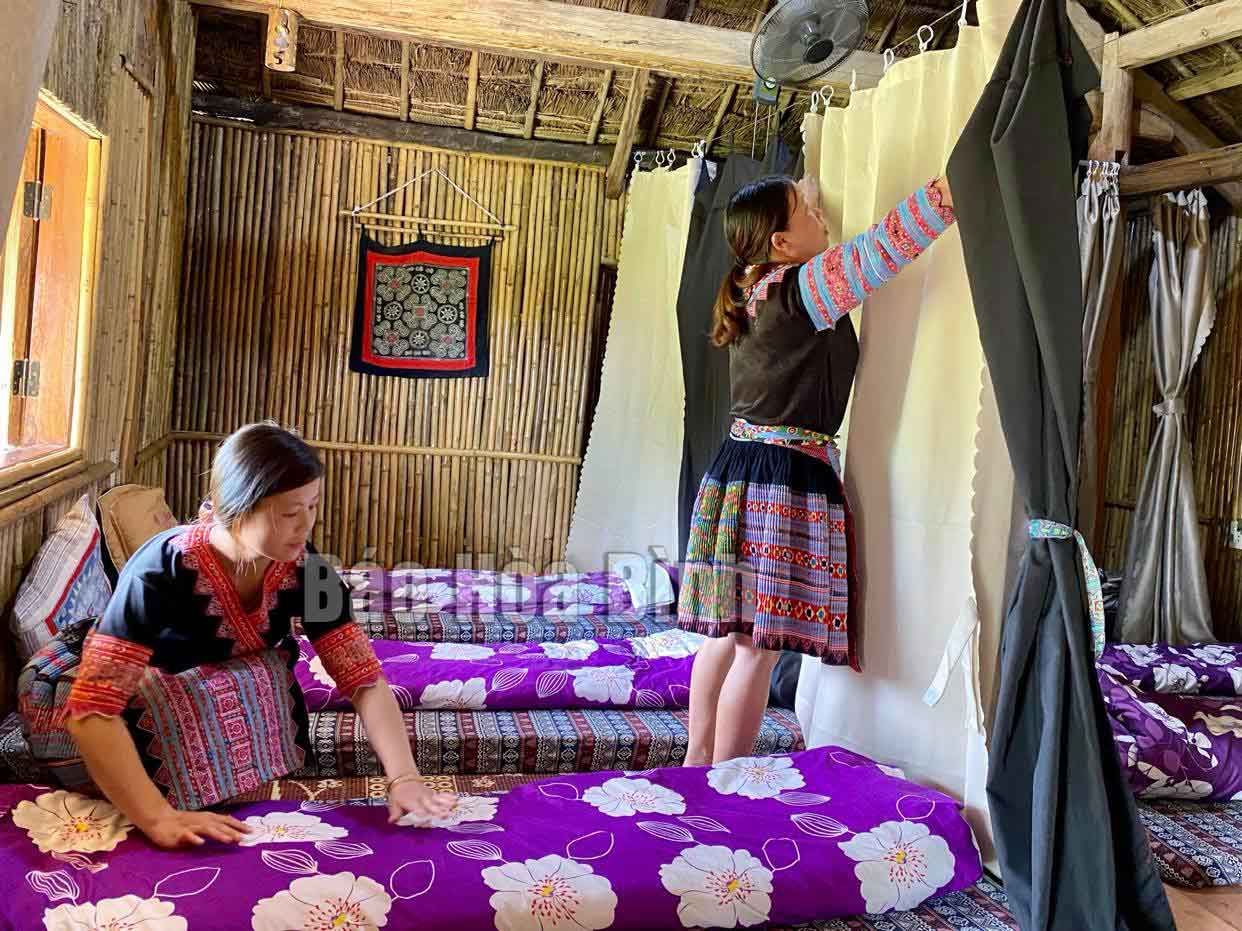
(HBO) – Community-based tourism has been opted by many localities in Hoa Binh province as the model has spurred sustainable development, generated more jobs and helped to raise living standards of ethnic minority groups.
It has also contributed to preserving the ecological
environment as well as traditional cultural identities of local ethnic minority
people.

A
Pao homestay in Pa Co commune, Mau Chau district, offers space for visitors to
experience daily activities of Mong ethnic minority people.
Statistics show that before 2015, the province had 105
homestay establishments, including 15 in Cao Phong district and 20 in Tan Lac
district. The quality of the homestay facilities has been improved
significantly, with affordable prices.
To promote the model, Hoa Binh has rolled out programmes on
tourism promotion. Local homestay establishments have also been assisted with
equipment and household utensils, the organisation of art programmes, and the
preservation of traditional cultures and costumes.
Through the funding of the national target programme on
new-style rural area building, Hoa Binh has helped the localities to promote
their brand names and "One Commune, One Product” (OCOP) products.
Training courses have also been held to equip local
residents with tourism knowledge and skills.
Deputy Director of the provincial Department of Culture,
Sports and Tourism Bui Xuan Truong said community-based tourism has remarkably
contributed to the locality’s tourism revenue, with international visitors accounting
for 34.8 percent, and domestic holiday-makers, 65.3 percent.
To further boost the model, the province has implemented a project
on community-based tourism development in combination with new-style rural area
building by 2030.
Accordingly, Hoa Binh will focus on mobilising resources for
community-based tourism, developing model homestay establishments, building
infrastructure, and stepping up the communications work./.
Located just a 20-minute drive from Hoa Binh City, Ora Hill Farmstay & Glamping Hoa Binh is a captivating new destination nestled in Mo hamlet, Bình Thanh commune, Cao Phong district. Combining farming with leisure, this tranquil retreat is perfect for those seeking balance, joy, and an immersive experience in the expansive beauty of nature.
Muong Bi - Tan Lac is renowned as one of the four famous Muong regions in Hoa Binh province. Blessed by nature with a favourable climate and stunning landscapes, Tan Lac holds great advantages for tourism development. The local tourism industry has made remarkable strides in recent times thanks to the attention and support from the local authorities and sectors.
With its strategic location, well-developed transport network, and diverse soil and climatic conditions, Hoa Binh is emerging as a must-visit destination in Vietnam's northwestern tourism corridor. The province boasts numerous attractions, including the Kim Boi hot springs (Kim Boi district), the Dau Rong cave complex (Cao Phong), the Mai Chau valley (Mai Chau), and the iconic Hoa Binh hydropower plant.
The northern mountainous province of Hoa Binh has been listed among the 71 most beautiful places to visit worldwide by the prestigious US travel magazine Condé Nast Traveller.
Hoa Binh province’s rich natural and cultural resources position it as a prime location for developing community-based tourism (CBT). In recent years, support from central and provincial policies, as well as assistance from non-governmental organisations, have encouraged local ethnic minority and mountainous communities to actively engage in the sector.



